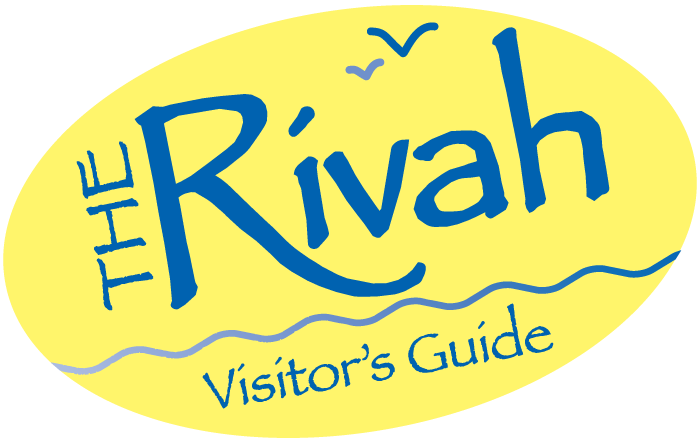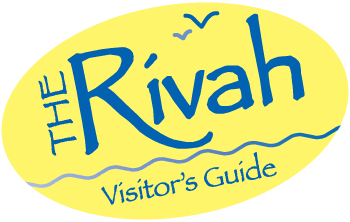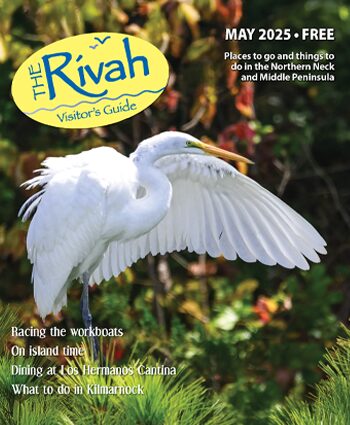compiled by Lisa Hinton-Valdrighi –
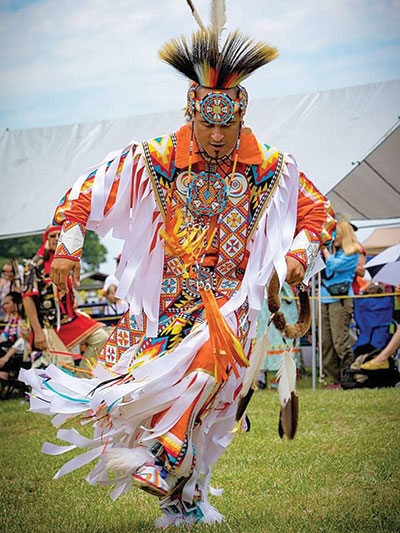
A simple glance at a map of the Northern Neck and Middle Peninsula reveals dozens of place names with a nod to our area’s Native American heritage. Many of the towns and villages and most of the rivers along Virginia’s coast have some link to the people that originally lived and thrived here.
Native Americans began hunting, fishing and farming on the shores of the Chesapeake Bay around 1,000 BC and many of the tribes that once called this area home are still thriving and active.
Nine American Indian tribes have received state recognition in the Commonwealth through a bill passed by the House of Delegates and State Senate and signed by the governor. Four of those tribes are in King William County including the Mattaponi, Upper Mattaponi, Pamunkey and Rappahannock. Two of those tribes have reservations off of King William Highway, the winding road that connects West Point to Central Garage. The other two recently increased their tribal property with lands put into trust by the Commonwealth.
Pamunkey Indian Reservation
175 Lay Landing Road, King William
The Pamunkey Indian Reservation is approximately 1,600 acres surrounded by the Pamunkey River off of King William Road. Visitors meander along roads with names like Pocohontas and Powhatan trails to reach the waterfront reservation, which was established in 1646 and is thought to be the oldest reservation in North America.
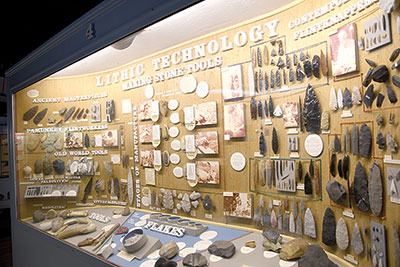
The Pamunkey Tribe has an enrollment of about 400 with about 100 residents in 63 homes on the reservation, according to Shaleigh Howells, cultural resource director/museum director.
The focal point for visitors is the reservation’s Pamunkey Indian Museum and Cultural Center, which opened in 1980. The museum focuses on the Tribe’s history from 12,000 years ago through the present in an expansive exhibit room divided into four themes: people, natural environment, settlement and subsistence. The massive glass display cabinets feature replicas as well as original Native American artifacts donated by Tribal Citizens.
For now, the center is a one-woman operation with Howells at the helm. Because of that, hours are limited and the museum is only open to the general public from 10 a.m.-4 p.m. Fridays through August. However private group tours may be arranged, said Howells.
“We offer a lot of special programming and pubic tours during the week, not during public hours. We just had two groups here from William & Mary,” she said. The museum is seasonal and closed in the winter.
A gift shop in the center offers jewelry and other items made by Tribal Citizens.
The center is adjacent to the Pamunkey Indian School, a one-room frame schoolhouse established in 1909 and used until the late 1940s, said Howells. Along with serving as part of the museum, the building is used for tribal meetings.
Behind the schoolhouse is the old pottery school, which was built in 1932 and promoted a tourist market for the Tribe-produced pottery.
At the entrance to the reservation is a replica of the original Trading Post, where the pottery was available for purchase.
About a quarter mile past the museum is the waterfront and one of the largest fish hatcheries in the state. Established in 1918, the indoor hatchery includes holding tanks, brine shrimp hatching tanks and tags shad to help document life history characteristics.
To schedule a group museum tour, call 804-843-2038.
Mattaponi Indian Reservation
1314 Mattaponi Reservation Circle, West Point
The Mattaponi Indian Reservation sits on the Mattaponi River just off of King William Highway. In this region for over 15,000 years, the Mattaponi are one of six original tribes of the Powhatan Confederacy and the reservation was established in 1658.
The Tribe enrollment stands at 450 but only about 75 people live on the 150-acre reservation, which much like the Pamunkey reservation includes one church, a fish hatchery, marine science center, museum and trading post. However, the museum is open by appointment only.
The trading post is open from 10 a.m.-3 p.m. on Saturdays, July through November and by appointment at 804-769-2104.
The Mattaponi Indian Reservation School building served as a school and church from 1890 to 1932. It currently serves as the tribal center and pottery shop.
Rappahannock Tribal Center
5036 Indian Neck Road, Indian Neck
Although the Rappahannock Tribe does not have a reservation, it has a Tribal Center on Indian Neck Road in King William County and has completed two phases of a three-phase project. A planned museum is still in the works. Because of construction, the Tribal Center is open by appointment only.
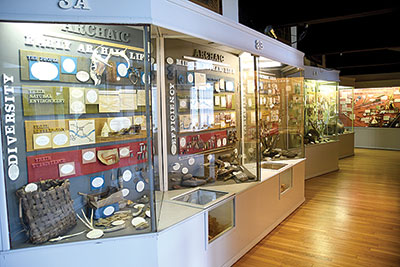
“We do have exhibits in the center and I give a history of the tribe on the tour,” said Chief G. Anne Richardson. “We are also working on the restoration of the chief’s house, where four generations of chiefs have lived.”
In 1998, the Tribe purchased 119 acres to establish a land trust, retreat center and housing development.
The Rappahanocks traditionally host a Harvest Festival and Pow Wow at the center in the fall, but because of construction will hold this year’s powwow on October 8-9 at Belle Grove Plantation, 9221 Belle Grove Drive, King George. The grand entrance is scheduled for noon on Saturday, October 8.
The Tribe has a dance group, the Rappahannock Native American Dancers, and a drum group, the Maskapow Drum Group, which perform locally and abroad.
To schedule a tour of the Tribal Center, 804-769-0260.
Native Americans powwow
For well over a quarter of a century the Upper Mattaponi Indian Tribe (UMIT) has welcomed visitors to its Pow Wow to experience its culture. For the first time in its history, the pow-wow grounds will belong to the Tribe when it holds this year’s event.
The Tribe was granted nearly 30 acres of land into a trust in April (see related story). The pow-wow grounds are included.
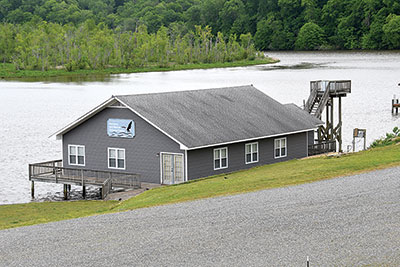
The Upper Mattaponi Indian Tribe’s 33rd Pow Wow will be held Memorial Day weekend, May 28-29, on the UMIT Tribal Grounds, 13476 King William Road, King William. The grounds will open at 10 a.m. on Saturday, May 28, with a grand entry at noon. It closes at 5 p.m. The grounds open at 11 a.m. Sunday, May 29. The grand entry is scheduled for 1 p.m. Activities will conclude at 5 p.m.
“Saturday is our biggest day with a crowd of between 2,000 to 2,500 people,” said UMIT Chief Frank Adams. “And I am anticipating an even bigger crowd this year. Because of COVID, it’s been two years since we’ve had the Pow Wow and everyone is tired of not being able to get out.”
The Native American Pow Wow and Spring Festival includes Native American dancing, drumming, Native American craft vendors and food. Contest include men’s traditional, fancy, grass/chicken dance and women’s traditional, fancy and jingle dance.
“Of course a lot of members of other tribes will be there as dancers but most of the visitors are [non-Native Americans],” said Chief Adams. “This is about us trying to keep our culture and heritage alive and educating others.”
Admission is free; donations are accepted. No pets, alcohol or firearms are permitted. Chairs, blankets and tents are permitted.
Visit info@umitribe.org or go to the Tribe’s Facebook page, Upper Mattaponi Tribe.
Upper Mattaponi gains tribal lands
The Upper Mattaponi Indian Tribe (UMIT), a group of 650 members, was granted nearly 30 acres of land into trust in King William County in April.
The Bureau of Indian Affairs accepted two parcels of land into trust for the benefit of the Tribe two years after the Tribe gained federal recognition in January 2018. The parcels total 27.69 acres and include the historic Sharon Indian School, the tribe’s government center and its pow-wow grounds. The UMIT owns abut 400 acres in King William.
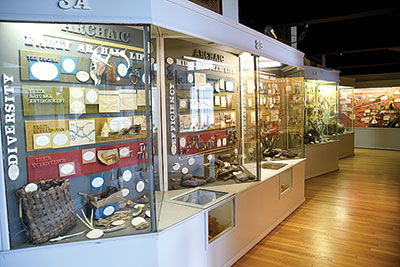
“The Upper Mattaponi Tribe now has tribal lands on which we can exercise our sovereignty, rebuild and further develop our community, and protect our way of life,” said Chief Frank Adams.
Trust land is governed by tribal laws, rather than state laws. Having trust land helps the Tribe access a variety of federal programs and services, including economic development preferences, housing support, and enhanced abilities to manage cultural and environmental resources. The United States government currently holds approximately 55 million surface acres and 59 million subsurface mineral estates in trust for tribes across the country.
“Congratulations to Chief Frank Adams and the members of the Upper Mattaponi Indian Tribe. This is indeed a historic time. Tribal lands provide an important home base and connection to tribal traditions and history. This monumental agreement will allow members to better connect with their past in order to preserve and share their culture with future generations,” said Secretary of the Commonwealth Kay Coles James.
Rappahannock Tribe re-acquires land at Fones Cliff
In April, the Rappahannock Tribe announced it had re-acquired 465 acres at Fones Cliffs, a sacred site on the eastern side of the Rappahannock River.
Prior to contact with the English, the tribe lived in at least three villages on the Cliffs––Wecuppom, Matchopick and Pissacoack. Fones Cliffs is where the tribe first encountered and defended their homeland against English settler Capt. John Smith during his explorations in 1608.
The Rappahannock Tribe is a federally recognized sovereign nation headquartered at Indian Neck in King & Queen County. The areas surrounding the Rappahannock River are the ancestral homelands of the Tribe, and the Tribe continues to live, visit and conduct traditional cultural practices along the river.
“We have worked for many years to restore this sacred place to the Tribe. With eagles being prayer messengers, this area where they gather has always been a place of natural, cultural and spiritual importance,” said Chief Anne Richardson.
The Tribe will preserve the land and the wildlife that flourish there including migratory birds and waterfowl. Fones Cliffs is home to bald eagle nests and has been designated by the National Audubon Society as an Important Bird Area with global significance. Eagles are sacred to the Rappahannock Tribe.

The land will be publicly accessible and held with a permanent conservation easement conveyed to the U.S. Fish and Wildlife Service (USFWS). Chesapeake Conservancey donated the easement to the USFWS, then donated the fee title to the Rappahannock Tribe, which intends to place the land in Trust with the Bureau of Indian Affairs.
The tribe plans trails and a replica of a 16th-century village, where tribal citizens can educate the public about their history and Indigenous approaches to conservation.
In addition, the land offers opportunities for the Tribe to expand their Return to the River program, which trains tribal youth in traditional river knowledge and practices and conducts outreach and education for other communities interested in the Rappahannock River. In 2017, through the generosity of Virginia Warner, Chesapeake Conservancy facilitated the donation of a single acre of land near Fones Cliffs, which the Tribe uses as a staging area for the program.
“Through the generosity of the family of William Dodge Angle, M.D., Chesapeake Conservancy is honored to facilitate the return of Fones Cliffs to the Tribe, and to partner with them to bring Indigenous-led conservation practices back to the Rappahannock River,” said Chesapeake Conservancy president and chief executive officer Joel Dunn.
“This is a significant step forward in the overall goal to save approximately 2,000 acres at Fones Cliffs, a haven for wildlife and waterfowl and one of the most beautiful places in the Chesapeake and in fact, the world,” said Dunn.
The donation restores an iconic site to the Tribe, which was forcibly removed from the Cliffs after 1649 as English settlers took over valuable farmland.
Additional funding for the Rappahannock Tribe to conserve the 465 acres was made possible by a grant from the National Fish and Wildlife Foundation through Walmart’s Acres for America Program.
Parks and museums offer a glimpse into local Native American heritage
Educational experiences abound for those seeking knowledge about the history and heritage of Native Americans along Virginia’s East Coast.
The three Virginia State Parks in the Northern Neck and Middle Peninsula—Belle Isle, Westmoreland and Machicomoco—all offer a glimpse into the culture.
Virginia’s newest state park, Machicomoco State Park in Gloucester County, is in the southern part of Gloucester County along the York River and approximately 10 miles down river from Werowocomoco. An open-air interpretive pavilion there provides information on the culture, landscape and movement of Virginia Indians through displays and a walking path in the landscape.
Exhibits in both the visitors centers at Belle Isle in Lancaster and Westmoreland near Montross highlight the impact of Native Americans on the surrounding property and counties in which they are located. Both parks also offer summer education sessions for children related to Native Americans. Check the parks’ websites for a list of upcoming events.
Looking for more, check out these county and town museums:
- Morattico Waterfront Museum in Lancaster County has a Native American room as part of its permanent exhibits.
- The Richmond County Museum in Warsaw has a permanent display dedicated to the “Story of the Rappahannock Indians.” The land that is today Richmond County was once the home of the Rappahannock Tribe, the northernmost of 32 tribes under the rule of Chief Powhatan.
- A glimpse of how Native Americans influenced and helped shape Middlesex County can be found at the Middlesex County Museum & Historical Society in Saluda.
- The Gloucester County Visitors Center with the historic Court Circle contains a room dedicated to telling the story of Werowocomoco.
- The Pocahontas Museum, on Lewis Avenue in Gloucester, is open by appointment. The museum includes thousands of items that highlight her legacy through preservation and education with collections in memorabilia, music, art, pop culture and crafts.
- The statue of Pocahontas, on Main Street in Gloucester, portrays Pocahontas as an 11-year-old girl.
- Commissioned by the Cook Foundation in 2006 as part of the 400th Anniversary of Jamestown, a mural, on the side of the Gloucester Library on Main Street, commemorates the Life and Legend of Pocahontas.
- The Essex County Museum and Historical Society in Tappahannock includes in its Essex Gallery an exhibit on the Rappahannock Tribe—The “People of the Tidal Water.” The display outlines how the Tribe lived and hunted in the woodlands along the river hundreds of years before the English arrived.
